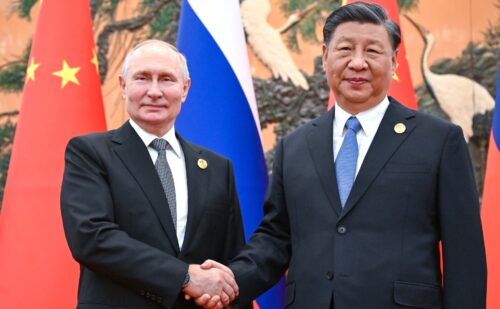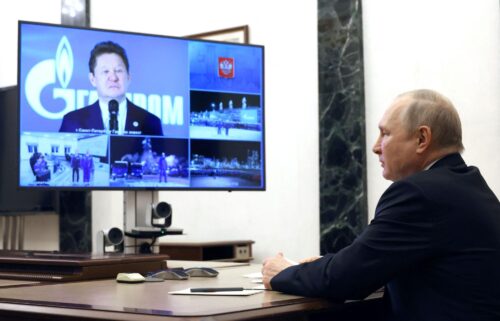The Middle Corridor and China’s reorientation of Eurasian trade
The war in Ukraine provides an opportunity for the Middle Corridor to become an alternative to the Russian route. Initially, China has been hesitant to embrace the idea, but as the war protracts, the calculus is changing, and the Middle Corridor may be finally getting China’s attention.

When the Russian invasion of Ukraine began, it presented China with multiple challenges. One of them was related to shifting Eurasian connectivity. For decades, most of the commercial traffic (around 80% to 90%) between China and the EU was going through the northern route, mostly coinciding with the territory of Russia. With the war in Ukraine and the resulting Western sanctions imposed on Moscow, the level of traffic through Russia went down by some 50%.
This accelerated the search for alternative routes. The South Caucasus is the shortest geographic area which would allow China’s westernmost parts to connect with the EU. This is often referred to as the “Middle Corridor,” which runs from Turkey via Georgia and Azerbaijan and then across the Caspian Sea to Central Asia and China.
The stakes are high. The countries along the corridor recognize the growing relevance of the project, reflected in numerous mutual official visits, signed memorandums on diminution of bottlenecks along the way, and various political announcements on the need to accelerate the work along the corridor.
Shifting geopolitical momentum
Throughout 2022, China was somewhat hesitant to openly support the expansion of the Middle Corridor, which was evident in its lack of statements on the matter. Beijing was likely hoping for a quick conclusion to the war in Ukraine. As the war has dragged on, a return to the northern route has become harder to imagine.
This realization exacerbated the need to develop alternative routes. Recently, the Chinese side made some interesting statements. In an interview, the Chinese ambassador to Georgia evaluated the Middle Corridor’s chances while also emphasizing the importance of both the EU and China’s involvement within the project. He specifically highlighted the need to circumvent Russian territory — a clear indication of changing Chinese perspective.
China has also made significant progress in Central Asia. Following the start of the war in Ukraine, Beijing pushed for implementation of the long-stalled China-Kyrgyzstan-Uzbekistan (CKU) railway, which would increase Beijing’s ability to penetrate Central Asia’s rugged lands. At the May summit in Xi’an between China and the five Central Asian states, the first in-person gathering of this kind, the parties finally agreed on initiating the railway project, the first major step in China’s push to shift trade from the northern route to the Middle Corridor.
Yet China alone cannot change the dynamic along the route. It needs backing from other actors too — such as the EU. Following the Russian invasion, Brussels has become more open about its ambitions in the wider Black Sea region, which includes the South Caucasus. High-level visits to the region, which have resulted in concrete investment for improving regional infrastructure, indicate the EU’s growing level of engagement. Georgia has been given a perspective with the potential to turn into an EU candidate status. Brussels also signed a new gas deal with Azerbaijan, aiming to doubling gas imports from the Caspian Sea, and signed up for a Black Sea energy cable from the South Caucasus to the EU. The long-term perspective is therefore of Brussels expanding its geopolitical gaze toward the trade, transit, and energy opportunities in the Middle Corridor.
Turkey is likewise supportive of the corridor. With its influence in Azerbaijan, Ankara grows increasingly ambitious toward Central Asia, which is considered inside the sphere of Turkey’s geopolitical influence. In its summit with his Kazakh counterpart Kasim Jomart Tokayev in May 2022, Turkish president Erdogan explicitly mentioned the need to advance the Middle Corridor.
Russia’s position also favors China’s shift to the Middle Corridor. Distracted and embattled on the Ukrainian front, Moscow now seems to be less able to keep its influence along the emerging Middle Corridor intact. China’s recent advances in Central Asia attest to this. and similar developments are taking place in the South Caucasus, too. If Beijing had been hesitant to make major moves in the South Caucasus because it was considered a part of Russia’s sphere of influence, now things are likely to change. Georgia is planning to build its long-stalled deep seaport of Anaklia and Chinese companies are likely to be among major bidders. Chinese companies are also reshaping Georgia’s rugged geography by constructing new roads, tunnels, and bridges, which will ultimately expand the connectivity to the Black Sea ports of Batumi and Poti and potential Anaklia.
Challenges
Yet there is still a long way to go for the corridor to establish itself as a viable connection between Europe and China.
First, the existing infrastructure in Central Asia and South Caucasus is largely inadequate. The trans-Caspian movement has yet to live up to expectations, while Kazakhstan and other Central Asian states’ road and railway infrastructure is not ready to transport greater throughput. There is also a question of how realistic the implementation of the CKU is. Its construction has been delayed for decades because of either Russian involvement (which wanted to forestall projects which went against its dominant position) or chronic political instability in Kyrgyzstan.
Moreover, while the total length of the Middle Corridor might not be as long as the Russian route, it is essentially a multimodal corridor consisting of sea and land crossings, which complicates the transportation. China is also unlikely to completely abandon the Russian route. Beijing will likely seek greater presence along the Middle Corridor as a complementary route.
Further westward, in the South Caucasus, Georgia still has inadequate port infrastructure. While the construction of the Anaklia port would alleviate transportation issues, kickstarting the project is one matter, but its successful completion is an entirely different one. As earlier failed attempts to build Anaklia showed, political infighting in Georgia could often complicate the project.
China won’t be able to easily enter the geopolitical fray in the South Caucasus as it has done in Central Asia. Georgia’s pro-Western stance would make it harder for Tbilisi to build close economic and investment ties around sensitive infrastructure, especially at the time of hardening China-U.S. relations. Beijing will also find it more difficult to entrench its position in Azerbaijan, where not Russian, but more so Turkish, business interests are present.
Ultimately, China needs a long-term perspective. The South Caucasus already has extensive infrastructure, and China is already promoting the construction of east-west connectivity across Central Asia. In the end, Beijing must yet create a comprehensive strategy for both Central Asia and the South Caucasus, where investments in infrastructure developments in one region should not be detached from the other. This holistic approach would facilitate creating a single vision for the South Caucasus and Central Asia as one unified space encompassing the Middle Corridor.






